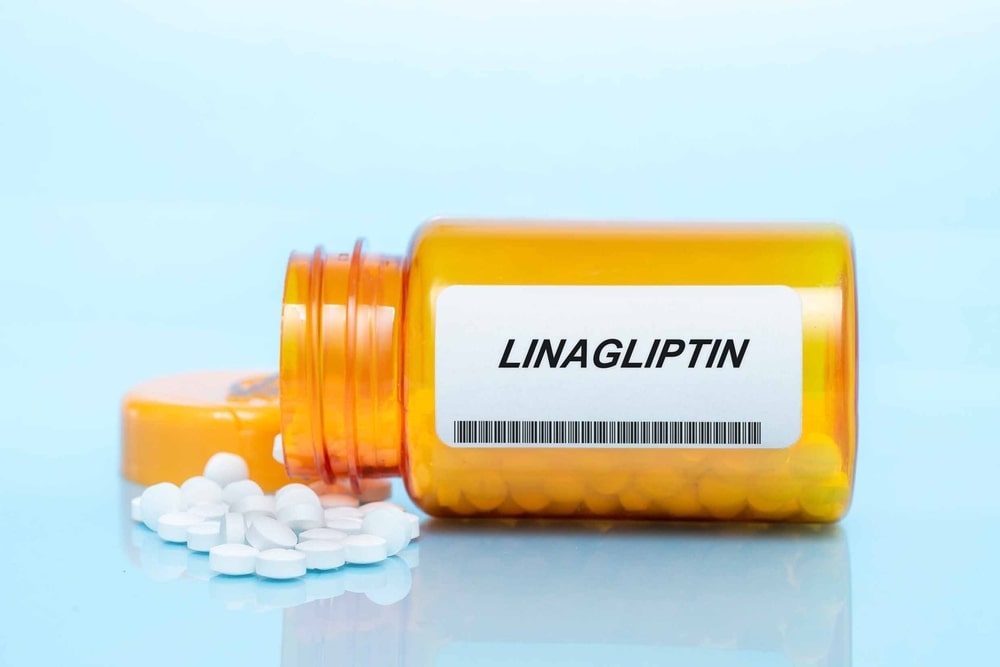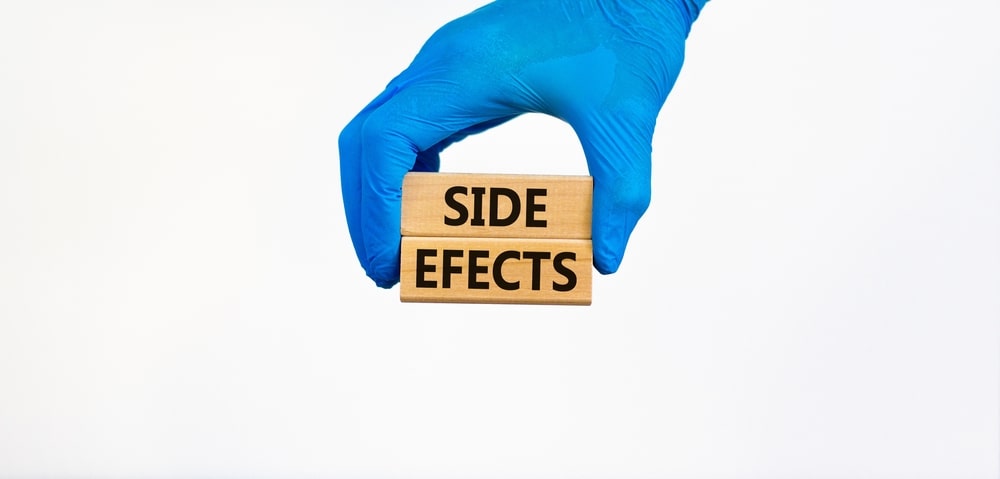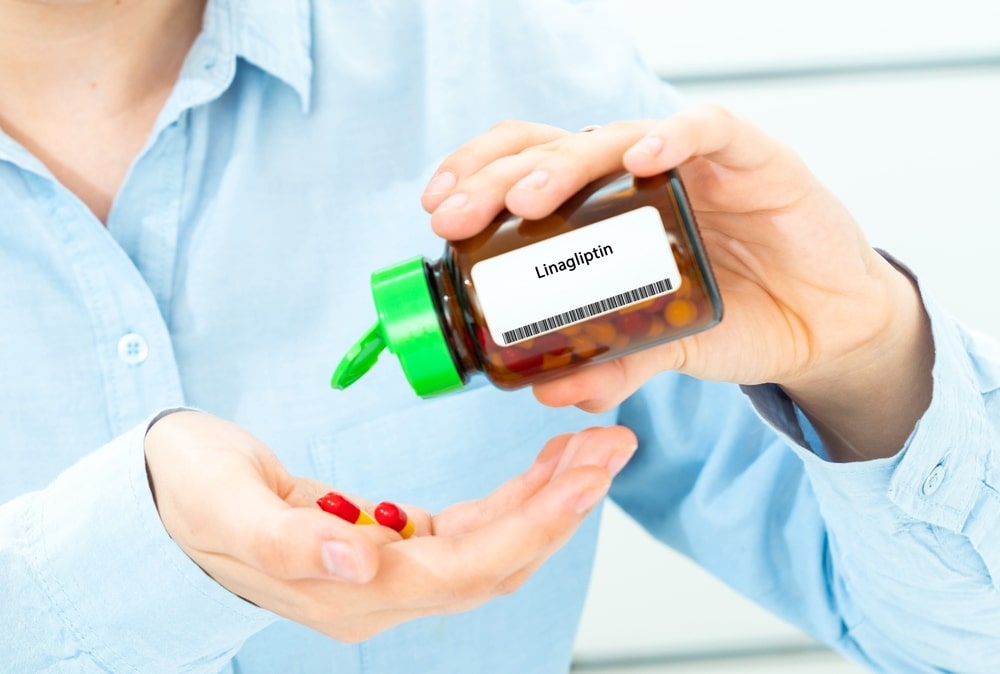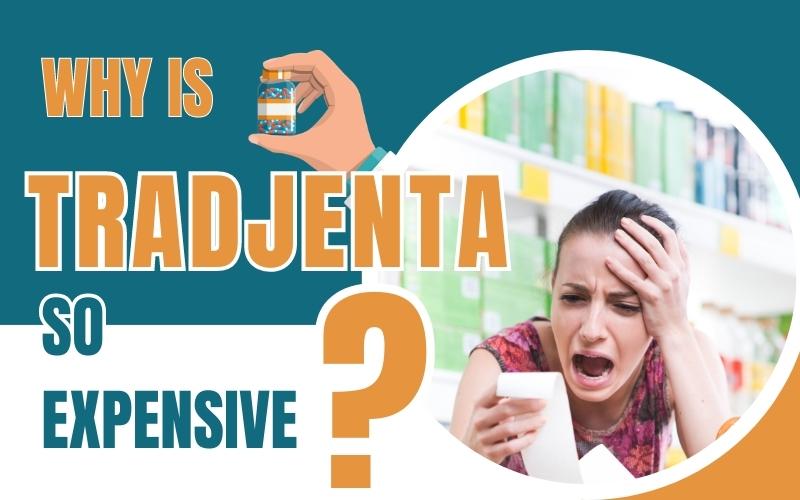In an era where the cost of healthcare is a subject of great concern, the rising prices of prescription medications often become a topic of intense scrutiny. One such medication that has drawn attention for its high price is Tradjenta (Linagliptin) which raises the question: Why is Tradjenta so expensive?
Many patients and medical experts have questions about Tradjenta’s high price because it is a well-liked drug for treating type 2 diabetes. This blog article will examine the elements influencing Tradjenta’s high price and shed insight into the intricate dynamics of the pharmaceutical sector. But first, let’s examine the mechanics and question why Tradjenta is so pricey. Let’s dive into medicine first.
What is Tradjenta?

To treat high blood sugar, Tradjenta is used along with a healthy diet, an exercise routine, and maybe other drugs. People with type 2 diabetes use it.
Keeping blood sugar levels under control helps prevent kidney damage, blindness, nerve damage, limb loss, and issues with sexual function. Your chance of having a heart attack or stroke may be reduced if your diabetes is well controlled.
The diabetic medication works by raising levels of incretins, which are organic compounds. Increased insulin release, particularly after eating, is one way incretins aid in blood sugar regulation. They also reduce the production of sugar by your liver.
What is Tradjenta used for?

When diet, exercise, and these antidiabetic medications taken by themselves are unable to regulate blood sugar levels sufficiently, Tradjenta is used to treat type-2 diabetes along with the following antidiabetic medications:
- Insulin, either alone or in combination with metformin; metformin and sulfonylurea.
- Patients who cannot be treated with metformin due to intolerance or kidney issues can also use Tradjenta on its own if their blood sugar levels cannot be satisfactorily controlled by diet and exercise alone.
- Only a prescription is required to buy the medication.
How does Tradjenta work?

Type-2 diabetes is a condition in which the body either cannot efficiently utilize insulin or the pancreas does not produce enough insulin to regulate the amount of glucose (sugar) in the blood. Linagliptin, the main ingredient in Tradjenta, is a dipeptidyl-peptidase-4 (DPP-4) inhibitor. It stops the body’s ‘incretin’ hormones from being broken down.
- Following a meal, the pancreas is stimulated to create insulin by these hormones. When blood glucose levels are high, Linagliptin stimulates the pancreas to make more insulin by delaying the activity of incretin hormones in the circulation. When blood glucose levels are low, Linagliptin is ineffective.
- By raising insulin levels and lowering glucagon levels, Tradjenta also lowers the quantity of glucose produced by the liver.
- These procedures work together to lower blood glucose levels and manage type 2 diabetes.
Tradjenta Side Effects:

Severe side effects of Trajenta include:
- Joint discomfort
- Strange skin blisters
- Shortness of breath
- Swollen ankles and feet.
- Unusual fatigue
- Sudden/unusual weight gain
- Low blood sugar (Hypoglycemia).
- Trembling
- A quick heartbeat
- Hunger
- Blurred vision
- Dizziness, or tingling in the hands or feet.
Tradjenta vs Januvia Cost:
Both medications belong to the class of dipeptidyl peptidase-4 (DPP-4) inhibitors and are commonly prescribed for managing type 2 diabetes. While their effectiveness and side-effect profiles may be similar, there can be differences in cost and potential cost-saving options.
When comparing the cost of Tradjenta (Linagliptin) and Januvia (Sitagliptin), it’s important to consider various factors beyond just the initial price:
- Insurance Coverage: The out-of-pocket cost for Tradjenta and Januvia can vary significantly depending on your insurance plan’s coverage. Some insurance plans may preferentially cover one medication over the other or offer different copayment or coinsurance amounts.
- Discounts and Savings Programs: Both manufacturers offer savings programs and discount cards that can help reduce the cost of these medications for eligible patients. These programs may offer savings on copayments or provide vouchers for a certain number of prescriptions.
- Formulary Coverage: The inclusion of Tradjenta or Januvia in your insurance plan’s formulary can impact the cost. Some plans may cover one medication but not the other, requiring a higher copayment or coinsurance for the non-covered drug.
- Physician Preference: Your healthcare provider’s preference or familiarity with one medication over the other may influence the choice of treatment. Discussing cost considerations with your doctor can help ensure that your prescribed medication is both effective and affordable for you.
How much does Tradjenta cost with insurance?
The most common version of Tradjenta is covered by 85% of insurance plans at a co-pay of $35.00-$55.00, however, some pharmacy coupons or cash prices may be lower. There is a huge price lowered when insurances cover medicines like Tradjenta. However, most of the communities fail to get these offers due to some other issues: legal or personal.
The cost of Tradjenta with insurance can vary significantly depending on your specific insurance plan, your location, and whether or not Tradjenta is included in your plan’s formulary. Typically, with insurance coverage, you would be responsible for paying a copayment or coinsurance amount, which could range from a few dollars to a higher amount depending on your plan’s coverage tier for prescription medications. Because of the high demand, the raising question persists: why is Tradjenta so expensive?
How much does Tradjenta cost without insurance?
As mentioned earlier, the cost may vary from $500 to $570. Without insurance or knowing the exact spot for buying medicines at a much lower price, you can pay hefty amounts. The burden on your pocket and life while paying for your health needs are the reasons for crashing the lives of people. Always seek proper guidance and always scroll for e-pharmacies for better options.
It’s important to note that prices can fluctuate over time and may vary between different pharmacies and regions. Additionally, some pharmacies offer discount programs or savings cards that can help reduce the out-of-pocket cost for individuals without insurance.
| Medication | Cost | Shop |
| Tradjenta 5mg | $37.44 | Check Now |
Tradjenta Generic:
Tradjenta (Linagliptin), is currently without a generic available in the market. Although the FDA has approved the generic, without its availability, it can be costly, even with insurance. Because of the high demand, the raising question persists: why is Tradjenta so expensive? Is there a generic for Tradjenta? Yes, LifeRx Pharmacy sells a generic Tradjenta online.
Benefits of Tradjenta generic compared to brand-name medication:
- These are typically more affordable than brand-name medications because they don’t involve the same research and development costs.
- These contain the same active ingredients as their brand-name counterparts and are required to meet the same quality and safety standards. Therefore, they are equally effective in treating the condition they are designed for.
- These often become available once the patent protection for the brand-name medication expires, increasing accessibility to essential medications for a broader population.
- Many insurance plans prefer or exclusively cover generics, making them more accessible and affordable for patients.
Note: While generics contain the same active ingredients as brand-name medications, the formulation might differ slightly, affecting factors like absorption rate or bioavailability. Generics may contain different inactive ingredients (such as fillers, dyes, or preservatives) from their brand-name counterparts. Some individuals may be sensitive or allergic to certain inactive ingredients, so it’s essential to review the ingredient list and discuss any concerns with a healthcare provider.
How to reduce Tradjenta cost?

- Prescription Assistance Programs: Various organizations, both governmental and non-profit, offer prescription assistance programs for individuals who struggle to afford their medications. These programs may provide financial assistance or free or discounted medications, including Tradjenta.
- Price Comparison: Before purchasing Tradjenta, compare prices at different pharmacies, including both online and brick-and-mortar stores. Prices can vary significantly, so shopping around can help you find the best deal.
- Receiving a 3-month supply: A person might be capable of receiving a 90-day supply of Tradjenta, based on the brand of this medication prescribed by the doctor. Receiving a 90-day supply of the medication might lower the price. If a person is interested in this alternative, discuss it with the concerned doctor.
Buy Tradjenta Online:

With the advent of e-commerce and online pharmacies, purchasing medications online has become increasingly popular and convenient. Tradjenta, a medication commonly prescribed for managing type 2 diabetes, is no exception. The potential benefits associated with purchasing Tradjenta online from LifeRx Pharmacy, help you make an informed decision about your healthcare needs.
Buying Tradjenta or any other medication online can offer convenience, cost savings, and privacy. However, it is crucial to approach online purchases with caution and ensure you choose reputable and licensed online pharmacies to mitigate the risks of counterfeit or substandard medications. LifeRx Pharmacy offers you safe and genuine medications.
NOTE: If you decide to buy Tradjenta online, consult with your healthcare provider to ensure it is the right option for you and to receive proper guidance on its usage. Always prioritize your safety and well-being when making decisions about your healthcare.
Why is Tradjenta so expensive?

Factors Influencing the High Cost:
Research and Development (R&D) Costs:
Bringing a new drug to the market involves extensive research, clinical trials, and regulatory processes that can span several years. Pharmaceutical companies invest significant financial resources into R&D to discover and develop new medications. The expenses incurred during this process, including research, preclinical testing, and clinical trials, contribute to the high cost of Tradjenta.
Patent Protection:
Pharmaceutical companies obtain patents for their newly developed medications to protect their intellectual property rights. These patents grant exclusive rights to the drug’s manufacturer for a specific period, typically 20 years. During this time, the company can set prices at levels necessary to recoup its investments and generate profits. Tradjenta’s high cost might be attributed, in part, to the protection offered by its patents, preventing competition from generic manufacturers.
Marketing and Promotion:
Promoting a new medication is a crucial aspect of the pharmaceutical industry. Companies heavily invest in marketing and promotional activities to create awareness among healthcare professionals and patients. These efforts involve advertising campaigns, direct-to-consumer marketing, and sales representatives visiting healthcare providers. The expenses associated with marketing and promotion contribute to the overall cost of medications like Tradjenta.
Distribution and Supply Chain:
The process of getting medications from the manufacturer to the patient involves an intricate supply chain. This includes various intermediaries such as wholesalers, distributors, and pharmacies, each adding their margin to cover their costs and generate profits. The cost of Tradjenta is further inflated as it navigates through this complex distribution network before reaching the end user.
Research and Development of Alternative Treatments:
The pharmaceutical industry is continuously striving to develop new and improved medications. The costs associated with researching and developing alternative treatments and therapies, which may or may not reach the market, also contribute to the high prices of existing medications. These expenses are often factored into the pricing strategy of drugs like Tradjenta.
Endnote:
While the high cost of medications like Tradjenta can be a burden for patients, it is essential to understand the complex factors driving these prices. Research and development expenses, patent protection, marketing efforts, distribution costs, and the ongoing pursuit of innovation all contribute to the pricing decisions made by pharmaceutical companies.
Balancing the need for affordable healthcare with the imperative to foster innovation in the pharmaceutical industry remains an ongoing challenge for policymakers, healthcare providers, and patients alike. As the landscape continues to evolve, it is crucial to promote transparency and explore solutions that ensure both access to essential medications and the continued development of ground-breaking treatments. Hope, you have got why is Tradjenta so expensive.
FAQs:
How long does it take for Tradjenta to work?
It takes around 24 hours to work. It works by inhibiting the enzyme dipeptidyl peptidase-4 (DPP-4), which helps to increase the levels of incretin hormones. These hormones stimulate insulin release and decrease the production of glucose by the liver, leading to lower blood sugar levels over time. However, the exact timing of when you may notice improvements in your blood sugar levels can vary depending on factors such as your response to the medication and other aspects of your diabetes management plan.
How long does Tradjenta stay in your system?
The half-life of the medicine is around 12 hours, which means the Tradjenta stays for 12 hours in the system and after 12 hours, it tapers to zero. However, it can take several days for the medication to be fully cleared from your body. Factors such as kidney function and individual metabolism can influence how long Tradjenta stays in your system. Always consult with your healthcare provider for personalized information regarding medication clearance and potential interactions.
When to take Tradjenta?
Tradjenta is typically taken once daily, with or without food. It can be taken at any time of the day, but it’s essential to take it consistently at the same time each day to maintain stable blood levels. Your healthcare provider may recommend a specific time based on your individual needs and lifestyle. It’s important to follow your doctor’s instructions regarding the timing and dosage of Tradjenta for the best results in managing your blood sugar levels.
Is Tradjenta bad for kidneys?
No, Tradjenta is not known to have any negative effects on the kidneys. Tradjenta is generally considered safe for individuals with kidney impairment, as it is primarily eliminated through the liver rather than the kidneys. However, like all medications, it’s essential to use Tradjenta cautiously in patients with kidney disease, especially in severe cases. Your healthcare provider will adjust the dosage accordingly based on your kidney function. Regular monitoring of kidney function is recommended while taking Tradjenta, particularly if you have pre-existing kidney issues.
Can you take Farxiga and Tradjenta together?
Farxiga (Dapagliflozin) and Tradjenta (Linagliptin) are both medications used to manage type 2 diabetes, but they belong to different classes of drugs and work in different ways to help control blood sugar levels. In some cases, healthcare providers may prescribe Farxiga and Tradjenta together as part of a comprehensive treatment plan for type 2 diabetes. This combination therapy can provide complementary effects and may help improve blood sugar control for some individuals who do not achieve adequate results with either medication alone.
What drug class is Tradjenta?
Tradjenta belongs to a class of antihyperglycemic drugs known as dipeptidyl peptidase 4 (DPP-4) inhibitors are used to treat type 2 diabetes mellitus, which carries a high risk of developing coronary disease, heart failure, stroke, and other cardiovascular diseases. This requires larger R&D and makes up to answer the question: Why is Tradjenta so expensive.


